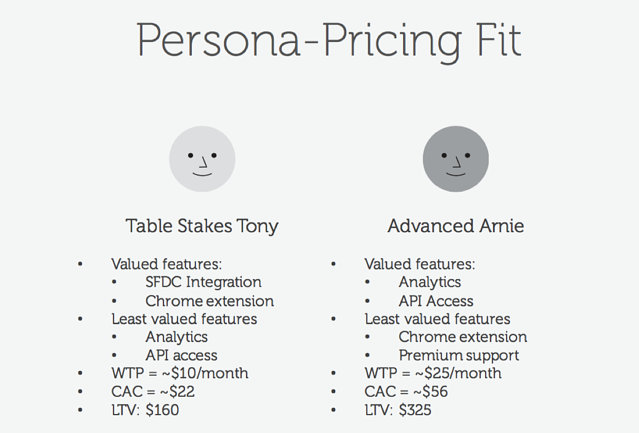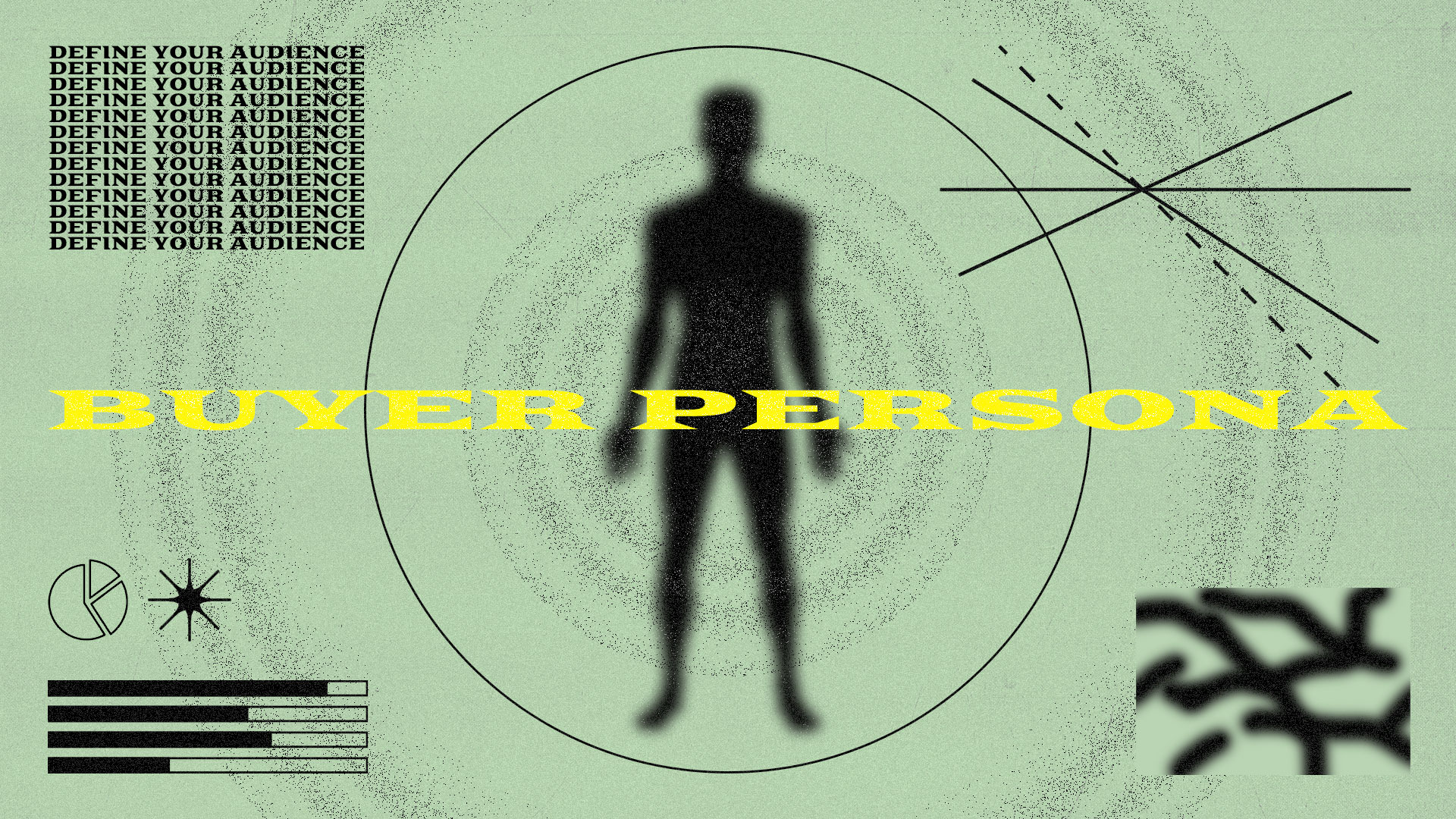Here in Viral Loops, we always say that it’s essential to capture your leads before your product even exists.
This is where the concept of prelaunch comes. Running a prelaunch campaign for your product may give you a batch of early adopters.
But other than your prelaunch marketing, you have to know precisely who your best customer is — even when you don’t have customers yet.
If you don’t put the time to sketch out who you want to buy your product, your launch will be an aimless arrow.
In this article, we are going to talk about all the ways you can build the so-called quantified buyer personas, such as:
- Identifying your most precious customers,
- Finding out which features they value (and which they don’t)
- and how much they are going to pay you.
Qualitative Buyer Personas.
Buyer persona development will give you two critical pieces of info:
- If there’s an audience for your product.
- Who these people are.
These personas can be leveraged for a successful product launch, help you make informed pricing and marketing strategy decisions.
Qualitative buyer personas are a semi-fictional representation of your ideal customer that includes information like their name, face, job title, motivations, and behavioral triggers.

To define your qualitative personas, you need to ask them what motivates them and what triggers their purchase decisions, you can start asking questions.
There are five things you can do today:
- Do Market research.
- Make an extensive competitive analysis.
- Send surveys.
- Conduct personal interviews.
- Check your Analytics.
Qualitative buyer personas are great start points, but they contain assumptions and generalizations, and they don’t go far enough to be useful as you develop your product and business.
They consist only of some vague adjectives, some beautiful photos, and catchy names, which lead to “guess and check” decisions for the marketing, sales, and product teams.
Quantified buyer personas.
Don’t trust your gut impressions and quickly jump to conclusions when you outline your buyer personas.
Instead, trust a data-heavy approach based on actionable information about who they are, what they want, and how much they would pay for it. Buyer personas should be associated with some actionable data.
They should indicate what features of the product each would find more and least valuable, and what they would be willing to pay for them.
Quantified buyer personas are backed by real data to help you that allows you to have a constitution for decision-making processes.
You can see an example below featured by one of the greatest articles we’ve ever read about buyer personas. This is how they should look like as price Intelligently sketched great:

They are segmented unit economics that includes quantitative information about each type of customer, such as:
- The value proposition that’s most important to them.
- The features that are most important to them.
- Their price sensitivity and willingness to pay.
- Their LTV and CAC.
How to quantify your buyer persona.
To grow your business, you have to clone your customers, and especially your highest-value customers.
To replicate your customers, you need to understand them first. And this is where buyer personas come in.
Deep quantified customer personas let you understand your customers better than you ever had before.
Creating segments of your different customers, you’re trying to acquire will help improve your copywriting, targeting, and provide valuable information to your product development team.
Conceptualize 3-5 individuals.
Get into a room with your business’s different decision-makers and start brainstorming about your “ideal customer.”
Breaking down the vague perception of your customers will help you segment your data later. Start profiling them across a spreadsheet, a piece of paper, or any other documentation.
Put the different profiles of people you’re currently targeting.
Break them down on their job title, the size of the company they work in, and hypotheses around what they care about in your product.
Ask questions like:
- “What industries are they in?”
- “What is the size of their company?”
- “What is their position inside the company?”
Then examine the differences between them and push yourself to come up with two or five different types.
Give them names, faces, goals, etc. Don’t worry if you think some of the personas are based on hypothesis; you’ll be able to validate or invalidate them in the next steps.
Collect and analyze data.
You’ll probably want to collect real data from your potential customers on demographic information, feature and value preferences, and data on willingness to pay as a baseline.
Validate or invalidate matrix by collecting data. Use market panels to collect data from them.
Understand what your customers’ value/Collect relevant preference data.
You need to know what each buyer persona values most to package your product features on your pricing page. Don’t ask people to rank features on a scale.
Force them to make decisions by asking them what they most want, and least want out of all the options.
This is like asking, “What’s the one thing you need in the product and the one thing you wouldn’t care if it wasn’t there?” to your customers.
If you ask enough people, you will have a clear picture of the features that are important to the buyers and the ones of lesser interest.
Then you can compare anything you may want between these particular individuals, and once you have this information, you can break it down by different personas.
Your Customers’ Willingness To Pay and Time sensitivity.
You may think that your product is worth the investment, but do your potential customers believe that as well?
You have to create a clear understanding of how much your customers are willing to pay for your product.
You can attain this information by asking the following questions:
- “What price would make this product out of budget for you?”
- “What price would make this product seem like it’s low quality, for you?”
- “What price would make this product a bit out of budget for you, but not out of the question? “
- “What price would make this product seem like a bargain?”
Your goal is to create a pricing tag that makes your product neither look cheap nor seem too expensive. Customers need to feel like they’ve made a good deal.
Just as with feature analysis, you can then break these numbers down by buyer personas, finding the optimum price point for each potential customer.
This kind of data also allows you to spot other pricing points that might have higher profits. For example, you can probably “sacrifice” a share of your audience for another audience with higher LTV (lifetime value).
Gathering all the data and assigning them in buyer personas will either validate or invalidate the hypothesis inputs that you had about your potential buyers.
You may find out that there are customers out there that don’t really like your features, are not willing to pay much, and cost a ton of money to acquire.
You shouldn’t be targeting this buyer anymore.
Iterate, Iterate, Iterate.
As your product changes, as your market changes. You need to stay ahead of the curve and understanding how these customers are moving so you can build the product, and price correctly, and make sure you’re acquiring the right customers for the right price and ultimately the right ROI.
Then it’s all about decisions and earning your paycheck by implementing these data into your decision-making process.
Collect data continuously and make them the primary input into your decisions. This data allows you to get the full scope of your customers.
You may choose to disagree with your customers and say we’re not going to target this customer anymore. But these data are hedging to taking these decisions.
Where your customers are from a cyclographic, choice, and value perspective to make sure you’re not making crucial mistakes in your strategic decisions and the strategic direction of your company.
How Much Your Customers Cost.
Having high-value customers is incredible, but you can’t be sure if you have the correct pricing strategy until you know how much it will cost you to acquire these customers.
Calculating the CAC (Customer Acquisition Cost) for each of your buyer personas will provide you with three things:
- A confirmation that you have positioned your product towards customers you can afford.
- Verification as to whether your personas are viable or not.
- Information to align your funnel so your marketing department can acquire the right leads via the right channels for each target persona.
You should keep in mind that a viable product, the customer’s LTV: CAC ratio should be over 3:1.
The goal here to make your customers active parts of your growth engine. Thus, you need to get more value from them than the cost to acquire them.
If you’ve got high-value, low-cost customers, you’re set for a reasonable growth rate.
Your CAC is calculated by dividing the total costs of sales and Marketing, with the number of customers acquired.
If you don’t have any reliable data from your sales and marketing departments, you don’t have to panic. It’s normal when you’re just starting up.
Once again, you can make use of market research by initially asking your potential customers about similar products that they’ve used in the past or still using it to that day.
Then, by inspecting how these products/companies are advertising, market, and sell, you can make a rough estimation of their CAC. That’s a good start.
You can also estimate your CAC from the type of your potential customers. It’s only reasonable that the higher the value of the customer, the higher the CAC.
As I’ve mentioned, it’s less critical to have the precise numbers, than to have a rough baseline that you can assign to your buyer personas.
From there, you can make iterations until you get the right data.
Translate all this to your Pricing Page.
Before you go.
Creating buyer personas is crucial for one reason:
The process allows you to understand what customers are valuable to you and how your product is valuable to your customers.
Conducting that kind of research will enable you to enhance your copywriting, product features, pricing plan, and marketing strategy. Hence, your product is going to be better and your customers happier.


1 comment
Great insights Apostle!